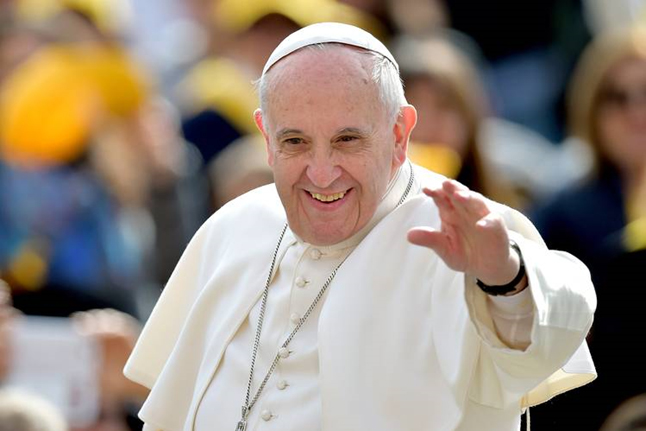
January 06, 2015

Pope Francis and the New Rome
The most radical part of Francis’ papacy is his embrace of the liberalizing principles of Vatican II—from poverty and sexual ethics to church governance.

Pope Francis in St. Peter's square at the Vatican on April 2, 2014. Photo: GABRIEL BOUYS/AGENCE FRANCE-PRESSE/GETTY IMAGES
By Francis X. Rocca
April 3, 2015 11:31 a.m. ET
One Saturday last month, Pope Francis celebrated Mass at Ognissanti (All Saints’) Church in one of Rome’s working-class neighborhoods. Little known to tourists or art historians, Ognissanti was the site of a momentous event in the modern history of the Catholic Church: Exactly 50 years earlier, Pope Paul VI had gone there to celebrate the first papal mass in Italian rather than in the traditional Latin.
In marking that anniversary, Pope Francis made plain his view of the vernacular Mass, one of the most visible changes ushered in by the Second Vatican Council (1962-65). The practice still pains Catholic traditionalists who mourn the loss of churchwide unity that came with a common language.
Allowing Catholics to pray in their local languages “was truly a courageous act by the church to draw closer to the people of God,” Pope Francis told a crowd gathered outside. “This is important for us, to follow the Mass this way. And there is no going back…Whoever goes back is mistaken.”
In his two years in office, the pontiff has drawn attention for his unconventional gestures—such as personally welcoming homeless people to the Sistine Chapel last month—but those gestures matter most as signs of the radical new direction in which he seeks to lead the Catholic Church: toward his vision of the promise of Vatican II. Both the acclaim and the alarm that Francis has generated as pope have been responses to his role in the long struggle over the council’s legacy.
For a half century, ordinary Catholics and their leaders have debated, often passionately, whether the changes that followed the council went too far or not far enough. Pope Francis’ immediate predecessors, John Paul II and Benedict XVI, devoted much of their pontificates to correcting what they deemed unjustified deviations from tradition in the name of Vatican II.
Now Pope Francis has effectively reversed course. In word and deed, he has argued that the church’s troubles reflect not recklessness but timidity in interpreting and applying the principles of Vatican II, especially the council’s call for the church to open itself to the modern world. “It usually takes half a century for a council to begin to sink in,” says Cardinal Timothy Dolan of New York. “Now we have a pope who says, ‘Look, we just had five decades of internal debates and controversy about the meaning of Vatican II, and now it’s time to do it.’ And that’s what he’s doing.”
Click on Link:
http://www.wsj.com/articles/pope-francis-and-the-new-rome-1428075101







